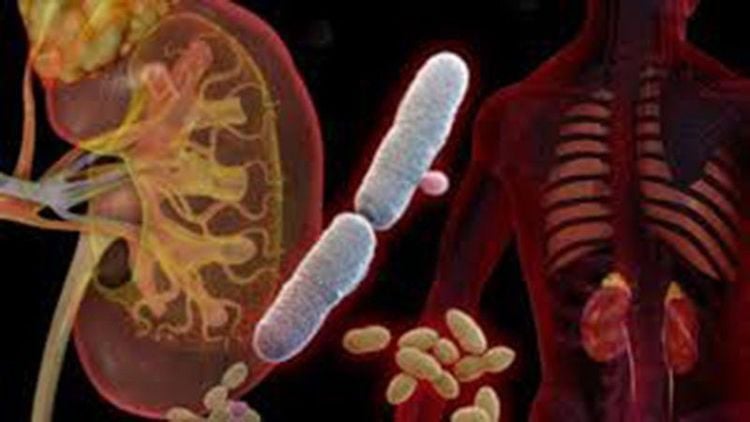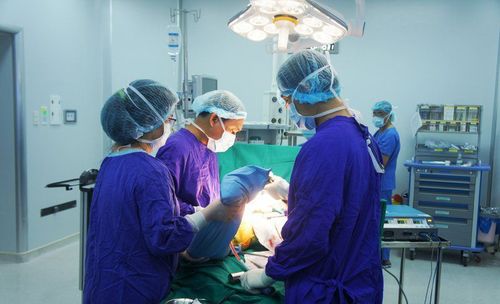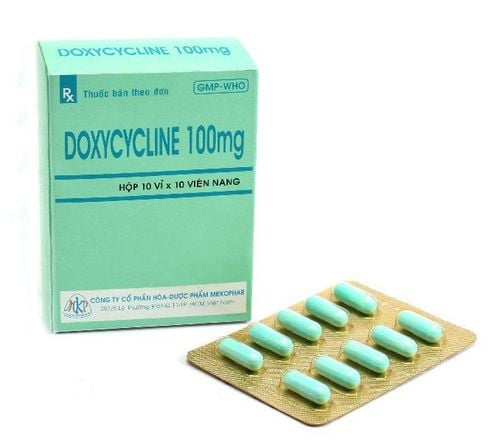This is an automatically translated article.
A urethral diverticulum is a pouch or bulge of varying sizes next to the urethra. Because the bulge connects to the urethra, it is filled with urine during urination. Urethral diverticulum is a common disease, more common in women than in men.
1. What is a urethral diverticulum?
The urethra is a tube that carries urine from the bladder to the outside. A urethral diverticulum is a pouch that forms along the length of the urethra. When urinating, urine will not be completely drained out, but it will accumulate in the diverticulum, causing the patient to feel pain, frequent infections and urinary incontinence.
Urethral diverticulum can affect a number of other parts of the body such as the vagina and pelvis. Due to the accumulation of urine and salt in the bladder, it can lead to the formation of urethral stones.
Urethral diverticulum is a common pathology, more common in women than in men. This condition can be congenital or acquired. Congenital urethral diverticulum usually originates from Gartner duct cysts and mullerian duct cysts. The cause of urethral diverticulum is thought to be related to bladder infection and blockage of the urethral gland, which weakens the walls of the urethra. In addition, during childbirth, pelvic trauma has also been identified as the cause of urethral diverticulum formation.

Chấn thương vùng chậu khi sinh cũng làm tăng nguy cơ mắc túi thừa niệu đạo
2. Symptoms of urethral diverticulum
Urethral diverticulum has many different symptoms, and the size of the diverticulum is not related to their severity. Therefore, a urethral diverticulum may not cause any symptoms.
Some common urethral diverticulum symptoms include:
Pain when urinating Hematuria: Blood in the urine Frequent urination: Drips after urinating, oozing Recurrent cystitis Frequent infections Urinary tract Bladder infection Pain during sex Pain or a mass in the vaginal wall Pelvic pain Including some lower urinary tract symptoms, such as urgency to urinate without straining, frequently urinating, urinating more than once during the night, decreased urine flow pressure, and not being able to urinate right away

Túi thừa niệu đạo có thể gây nhiễm trùng đường tiểu
3. Diagnosis of urethral diverticulum
Diagnostic methods for urethral diverticulum include:
Physical examination: In women, the vaginal walls may be examined to detect underlying masses. In addition, during the examination, the doctor may also look for ways to remove pus or urine from the diverticulum. Cystoscopy: An in-office procedure that involves placing a cystoscope into the bladder to see if a urethral diverticulum exists. Ultrasound: This is the most commonly used method. This method uses sound waves to obtain an image of the pelvis. X-ray of the bladder and urinary tract during urination Double-balloon positive pressure urethrograph: This is a special diagnostic method similar to an X-ray of the bladder and urinary tract during urination, but it uses a The special type of catheter with balloon has 90% accuracy in detecting urethral diverticulum. This is an invasive diagnostic method and requires anesthesia for the patient, so it is not commonly used.
4. Treatment of urethral diverticulum
There are many methods of treating urethral diverticulum. Some surgical methods include:Complete excision of the sac Cut into the neck of the pouch and drain the contents of the urethral sac Spence procedure, including entry from the vaginal diverticulum If infection is present, it is necessary to thoroughly treated prior to surgery.

Cần điều trị dứt điểm nhiễm trùng trước khi phẫu thuật
Depending on the size and location of the urethral diverticulum to choose the appropriate surgical method. After surgery, you will likely be given antibiotics for at least 24 hours to prevent infection. The patient may also have a catheter placed and the shape of the urethra fixed for a few weeks. In addition, the doctor will instruct the patient to perform tests in the following weeks, to check wound healing and schedule an appointment to remove the catheter.
When performing any surgical procedure, there may be some side effects such as: excessive bleeding, infection, recurrence of diverticulum, urethral fistula and urethral scarring.
In a nutshell, a urethral diverticulum is a pouch or bulge of various sizes next to the urethra. Because the bulge communicates with the urethra, the diverticulum is filled with urine. There are a variety of surgical methods to treat a urethral diverticulum, depending on its size. However, after surgery can appear complications, so the patient should be closely monitored. Therefore, when there are any abnormal signs, it is necessary to immediately notify the doctor for timely intervention.
Vinmec International General Hospital with a system of modern facilities, medical equipment and a team of experts and doctors with many years of experience in neurological examination and treatment, patients can completely peace of mind for examination and treatment at the Hospital.
To register for examination and treatment at Vinmec International General Hospital, you can contact Vinmec Health System nationwide, or register online HERE.













